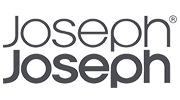Blog
The Future is Now: Revolutionary Printing Technologies Transforming Industries

The printing industry is undergoing a remarkable transformation, driven by cutting-edge technologies that are reshaping how we create, innovate, and interact with the world around us. Gone are the days of traditional printing being limited to paper and ink. Today, we’re witnessing a revolution fueled by advancements that push the boundaries of what’s possible.
1. 3D Printing (Additive Manufacturing):
- Beyond Prototypes: 3D printing has evolved from rapid prototyping to mainstream manufacturing. Industries like aerospace, healthcare, and construction are leveraging it to create complex, customized parts and products.
- Materials Innovation: Advancements in materials science are enabling 3D printing with diverse materials, including metals, ceramics, polymers, and even biological tissues.
- Personalization and On-Demand Production: 3D printing empowers businesses and individuals to create personalized products on demand, reducing waste and streamlining supply chains.
2. Digital Textile Printing:
- Sustainable Fashion: Digital textile printing is revolutionizing the fashion industry by enabling on-demand production, reducing water consumption, and minimizing waste.
- Customization and Design Freedom: Designers can create intricate, high-resolution prints on various fabrics, opening up endless possibilities for customization and personalization.
- Faster Turnaround Times: Digital textile printing offers faster turnaround times compared to traditional methods, allowing for quicker responses to market trends.
3. Nanotechnology in Printing:
- Enhanced Functionality: Nanotechnology is enabling the creation of functional inks and coatings with unique properties, such as conductivity, antimicrobial properties, and self-healing capabilities.
- Miniaturization and Precision: Nanoprinting allows for the creation of incredibly small and precise structures, opening up new possibilities in electronics, sensors, and biomedical devices.
- Advanced Materials: Nanomaterials are being incorporated into inks and coatings to enhance durability, flexibility, and other performance characteristics.
4. Advanced Ink Technologies:
- Conductive Inks: These inks enable the printing of electronic circuits and components on flexible substrates, paving the way for wearable electronics and smart packaging.
- UV-Curable Inks: These inks offer fast curing times, high durability, and vibrant colors, making them ideal for a wide range of applications, including signage, packaging, and industrial printing.
- Eco-Friendly Inks: Driven by sustainability concerns, the industry is seeing a rise in eco-friendly inks made from renewable resources and with reduced environmental impact.
5. Smart Printing and IoT Integration:
- Connected Printing Devices: Printers are becoming increasingly connected to the internet of things (IoT), enabling remote monitoring, predictive maintenance, and automated workflows.
- Data-Driven Printing: Data analytics and artificial intelligence (AI) are being used to optimize printing processes, reduce waste, and improve efficiency.
- Personalized Experiences: Smart printing technologies can enable personalized printing experiences, such as customized packaging and interactive printed materials.
How ICRA Printing Embraces Innovation:
At ICRA Printing, we stay at the forefront of these technological advancements. We leverage state-of-the-art digital printing technologies to provide our customers with high-quality, innovative printing solutions. We understand the importance of adapting to the newest trends, and work to provide the best possible product.










